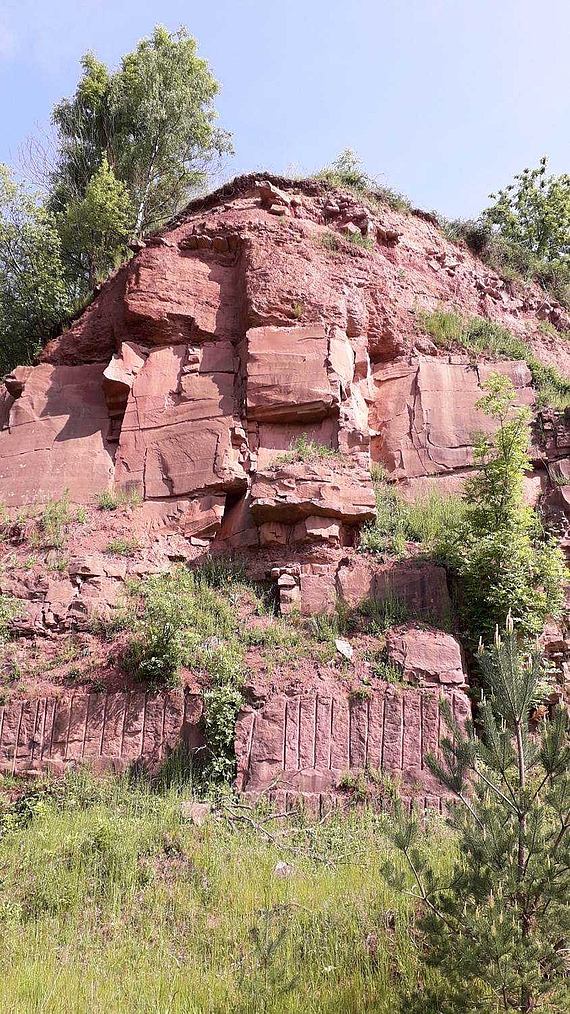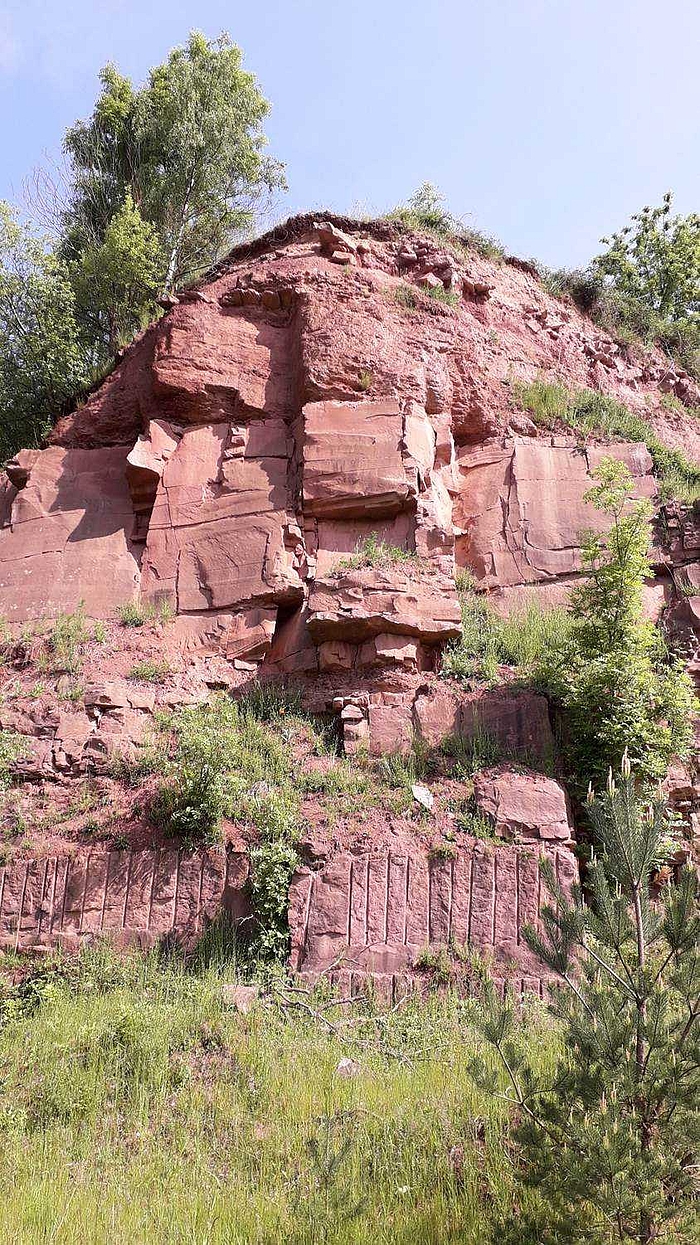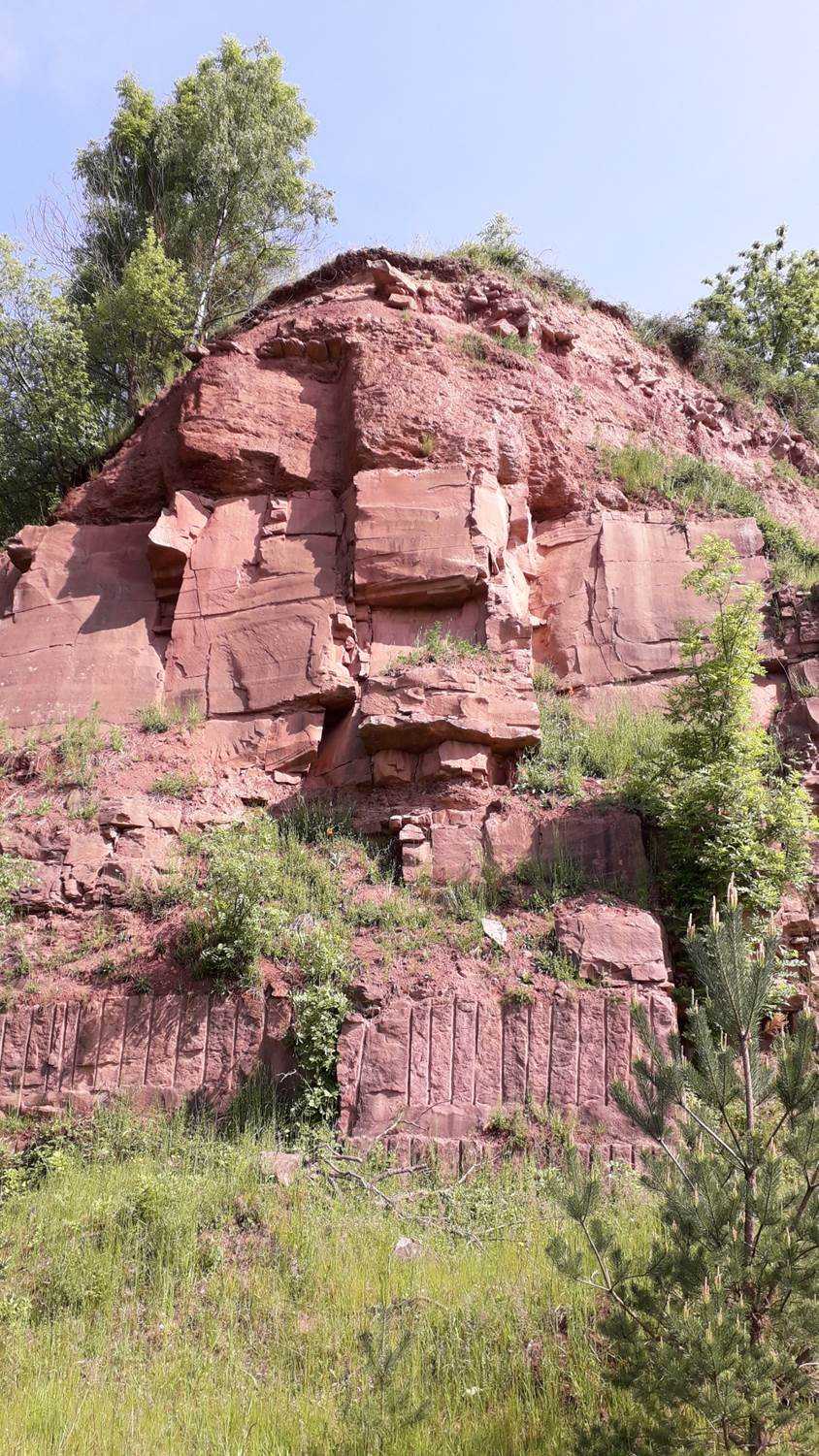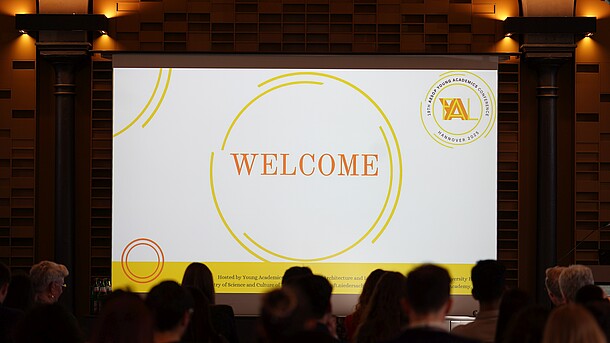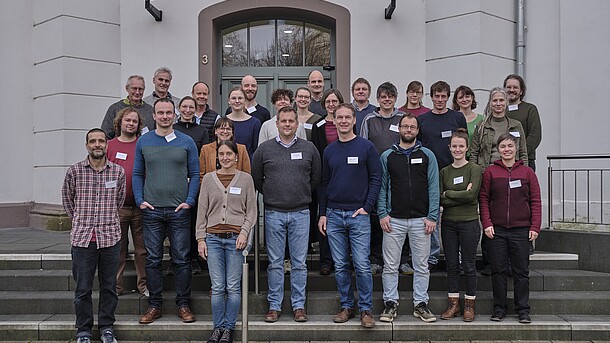Where does the "Solling slate" come from?
What characterises it and how does it shape the landscape?
How did "meadow farming" work here? What kind of habitat does the arnica need?
Who maintains the landscape in the Solling-Vogler Nature Park?
Questions like these were the focus of an excursion on 24 May 2019, offered by Dr Roswitha Kirsch-Stracke and Florian Gade.
In Arholzen, the group met the cultural scientist Dr Hilko Linnemann, now employed by the district of Holzminden in district and regional development. A few years ago, he designed the 3 km long "Sandstone Experience Trail Arholzen"(„Sandstein-Erlebniswanderweg Arholzen“) and realised it as part of a project with long-term unemployed people. The very good state of maintenance of the trail and the currently added stations show that the local population identifies with this project. The path shows at its stations the special characteristics of the typical Solling sandstone, which can also be used in thin slabs because of its very good splitting properties. Its reddish colour is used for masonry, roofing, wall cladding, fencing, paving and much more, and it is a characteristic feature of the villages in the Solling and thus of the region's landscape.
From Arholzen, we travelled by public transport - time-consuming but quite feasible - to Hellental. The settlement structure of this densely built-up village shows that even more than 100 years ago its population did not live primarily from agriculture, but pursued a craft, namely glassmaking, which is still widespread in the Solling today. The abundance of sand (stone) in suitable mineral composition and of wood (charcoal) made the region famous for this trade as early as the Middle Ages; to this day, glassmakers from the Solling region are among the world market leaders for top-quality glass.
With Dr. Ansgar Hoppe, project manager for cooperative nature conservation in the Solling-Vogler Nature Park (Naturpark-Solling-Vogler), the group hiked up the valley through Hellental to Silberborn. On the 8 km long path, different plant species and communities of the grassland of soil acid sites could be learned about. Particularly impressive were the damp bristly grasslands with wood lousewort (Pedicularis sylvatica) and marsh violet (Viola palustris) as well as the mountain meadows with bear's-foot (Meum athamanticum) formed on the valley slopes. In the Upper Hellental, Dr Hoppe explained the attempts to establish arnica (Arnica montana).
The group repeatedly encountered grazing herds of animals. Especially the robust red cattle has been used in the Solling for about 15 years as a livestock breed and for landscape conservation. The excursion ended with a tour of the Mecklenbruch to the north-east of Silberborn, which is the largest raised bog in the Solling and one of the best-preserved and most valuable raised bogs in the Lower Saxony uplands.
In their remarks, both Dr Linnemann and Dr Hoppe repeatedly drew attention to the need for close cooperation with the local population, land users and civic engagement. It is therefore not surprising that both experts are also involved in the "Cultural Landscape" expert group of the Lower Saxony Heritage Society (Niedersächsischer Heimatbund e.V.). (NHB) („Kulturlandschaft“ des Niedersächsischen Heimatbundes e.V. (NHB)).
(Photos, unless otherwise noted: Kirsch-Stracke)




